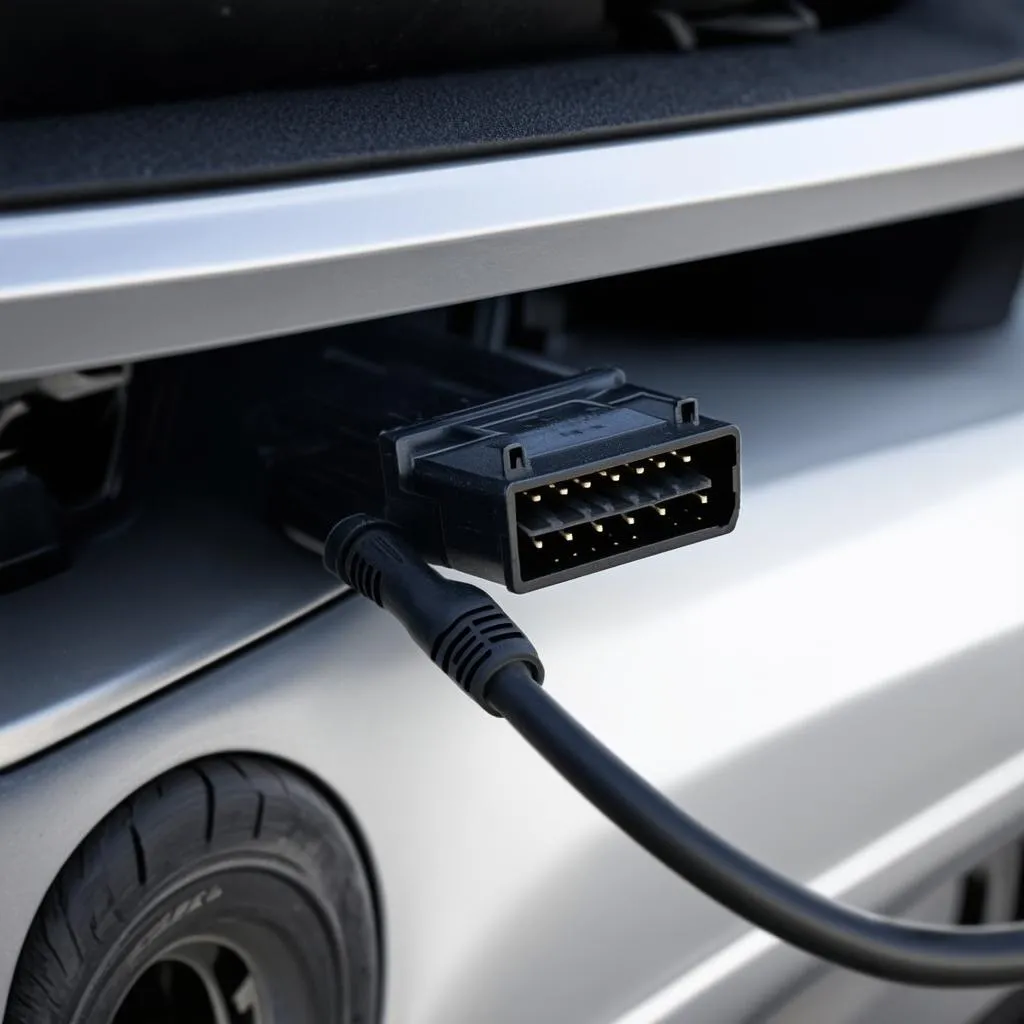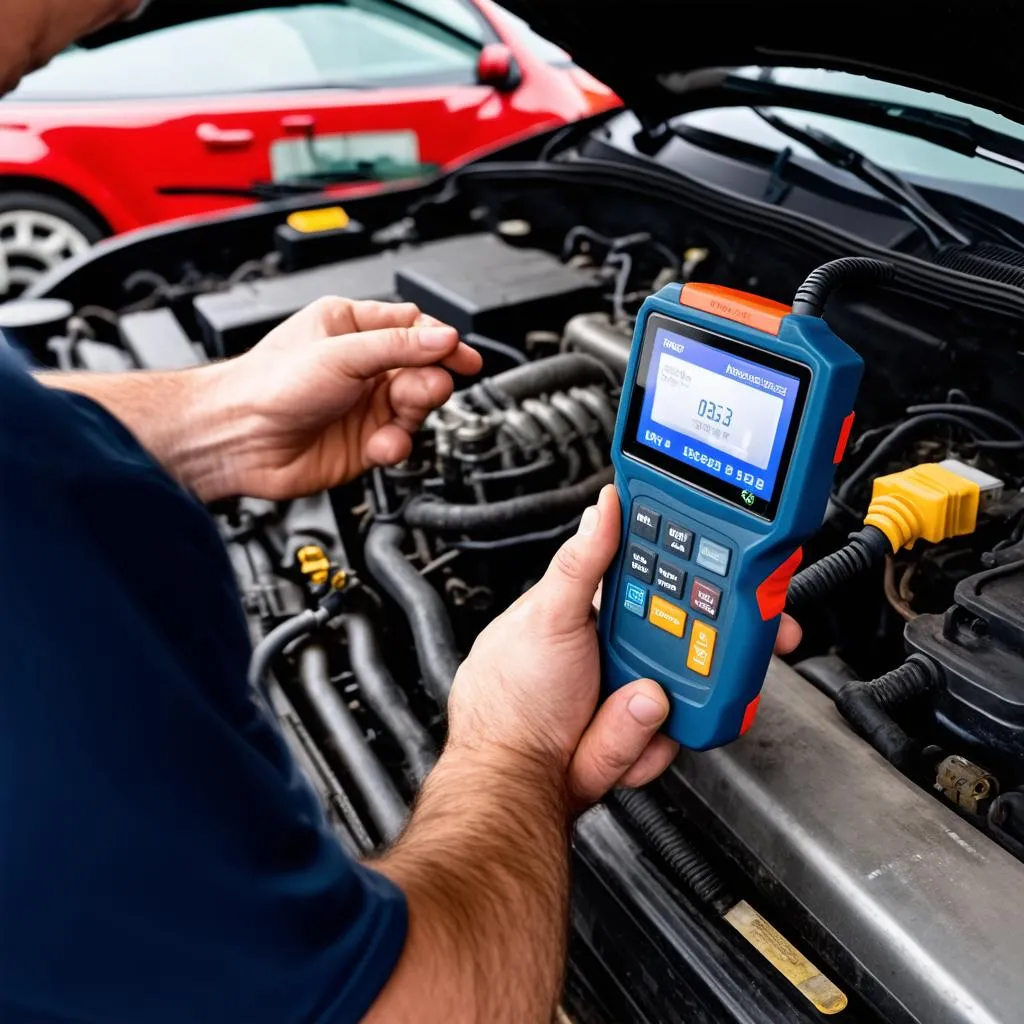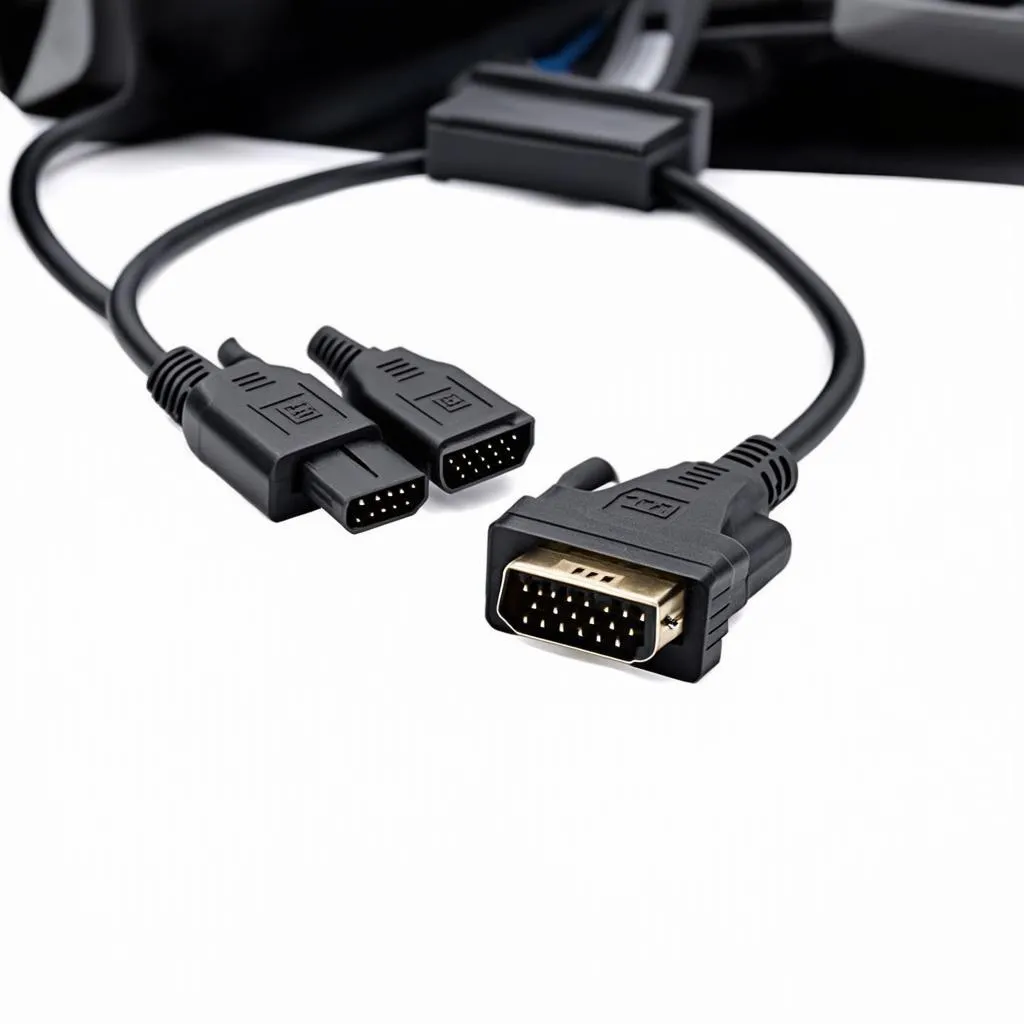“If it ain’t broke, don’t fix it,” they say. But sometimes, even a perfectly functioning car needs a little upgrade. And for some car enthusiasts, that upgrade might involve adding a second OBD2 connector. But is it possible? And is it even necessary?
Understanding the Importance of the OBD2 Connector
The OBD2 (On-Board Diagnostics 2) connector is a standard port found in most vehicles manufactured after 1996. It’s like the car’s secret doorway to its internal systems, allowing technicians and even owners to access a wealth of information.
What Can You Do With an OBD2 Connector?
Think of the OBD2 connector as a window into the car’s brain. It lets you:
- Diagnose engine problems: This is the primary function of the OBD2 connector. It allows you to read error codes from the engine control module (ECM), helping you pinpoint the cause of any issues.
- Monitor real-time data: From engine speed and fuel consumption to air intake temperature and more, you can get a detailed look at how your car is performing.
- Access advanced features: Some OBD2 devices allow you to modify certain settings, such as changing your car’s idle speed or disabling emissions systems.
- Connect to your car with your smartphone: Many apps are available that utilize the OBD2 connector to provide a user-friendly interface for accessing car data and features.
Why Would You Want Two OBD2 Connectors?
So why would you need two OBD2 connectors? It all comes down to the “convenience” factor. Having two OBD2 connectors allows you to:
- Connect multiple devices simultaneously: This is especially handy for those who use multiple OBD2 devices, such as a diagnostic scanner and a performance monitoring tool.
- Leave one device permanently connected: If you regularly use a device like a performance monitor, you can leave it plugged in while still being able to use the second connector for diagnostics or other purposes.
- Provide more flexibility: For those who frequently work on their cars, having two OBD2 connectors can simplify the process of accessing and working with the car’s systems.
Can I Install Two OBD2 Connectors in a Car?
The short answer is: it depends.
While there are adapters and splitter cables available that allow you to temporarily connect two devices to a single OBD2 port, installing two permanent connectors requires some modifications.
The Technical Challenges:
- OBD2 standards: The OBD2 connector is a standardized part, meaning it’s designed to fit all compatible vehicles. However, installing a second connector might require modifications to the wiring and could potentially conflict with the car’s electrical system.
- Electrical interference: Adding a second connector could lead to electrical interference, potentially affecting the operation of other car systems.
- Warranty considerations: Modifying the car’s electrical system could void your manufacturer’s warranty.
The Alternatives:
Instead of installing a second connector, consider exploring these alternatives:
- Bluetooth OBD2 adapter: Many OBD2 devices now come with Bluetooth connectivity, allowing you to connect multiple devices to your car wirelessly.
- OBD2 splitter cable: While not a permanent solution, a splitter cable allows you to temporarily connect two devices to a single connector.
- Consult a professional: If you’re unsure about the risks involved or the technical aspects of installing a second connector, it’s always best to consult with a qualified automotive technician.
The Feng Shui Perspective
While installing two OBD2 connectors may seem like a simple modification, it’s important to consider the bigger picture. In Feng Shui, the car represents our journey through life. Modifying its electrical system could disrupt the flow of energy and potentially affect our overall wellbeing.
The concept of “Qi” (life force) is crucial in Feng Shui. It’s believed that energy flows throughout our environment, influencing our thoughts, emotions, and actions. When Qi is balanced, we experience harmony and good fortune.
If you’re considering adding a second OBD2 connector, it’s essential to ensure it’s done professionally and safely to avoid any negative impacts on your car’s energy flow.
Frequently Asked Questions (FAQ)
Q: Can I use a splitter cable for both diagnostic and data logging purposes?
A: While possible, it’s not recommended. Using a splitter can cause voltage drops, potentially affecting the accuracy of both devices. It’s best to use a Bluetooth adapter or consult with a technician for alternative solutions.
Q: What happens if I install a second connector incorrectly?
A: Incorrect installation can lead to electrical shorts, damage to the car’s electrical system, and potentially even a fire. Always seek professional assistance for any modifications to your car’s electrical system.
Q: Can I install a second OBD2 connector in a European car?
A: The process is generally the same for European cars, but it’s important to note that the OBD2 standards might differ slightly. Consult a qualified mechanic for specific information on your car model.
Let’s Get Technical:
OBD2 connector pinout: The OBD2 connector has 16 pins, each with a specific function. Understanding the pinout is crucial when working with the OBD2 system.
OBD2 protocol: There are various communication protocols used by the OBD2 system. Knowing which protocol your car uses is important for choosing compatible devices and software.
What’s Next:
Want to learn more about how to diagnose car problems? Check out our article on “Can OBD2 2” for a deeper dive into the world of automotive diagnostics.
Looking for a specific OBD2 device? We recommend checking out our guide on “C109E29 OBD”.
We’re here to help! For any assistance with installing or using OBD2 devices, feel free to reach out to our team via Whatsapp: +84767531508. We have a team of qualified technicians ready to answer your questions and guide you through the process.
 OBD2 Connector in a Car
OBD2 Connector in a Car
 OBD2 Diagnostic Tool
OBD2 Diagnostic Tool
 OBD2 Splitter Cable
OBD2 Splitter Cable
Remember, a car’s electrical system is complex, so it’s always best to consult with a professional before making any modifications. Drive safe and happy tinkering!